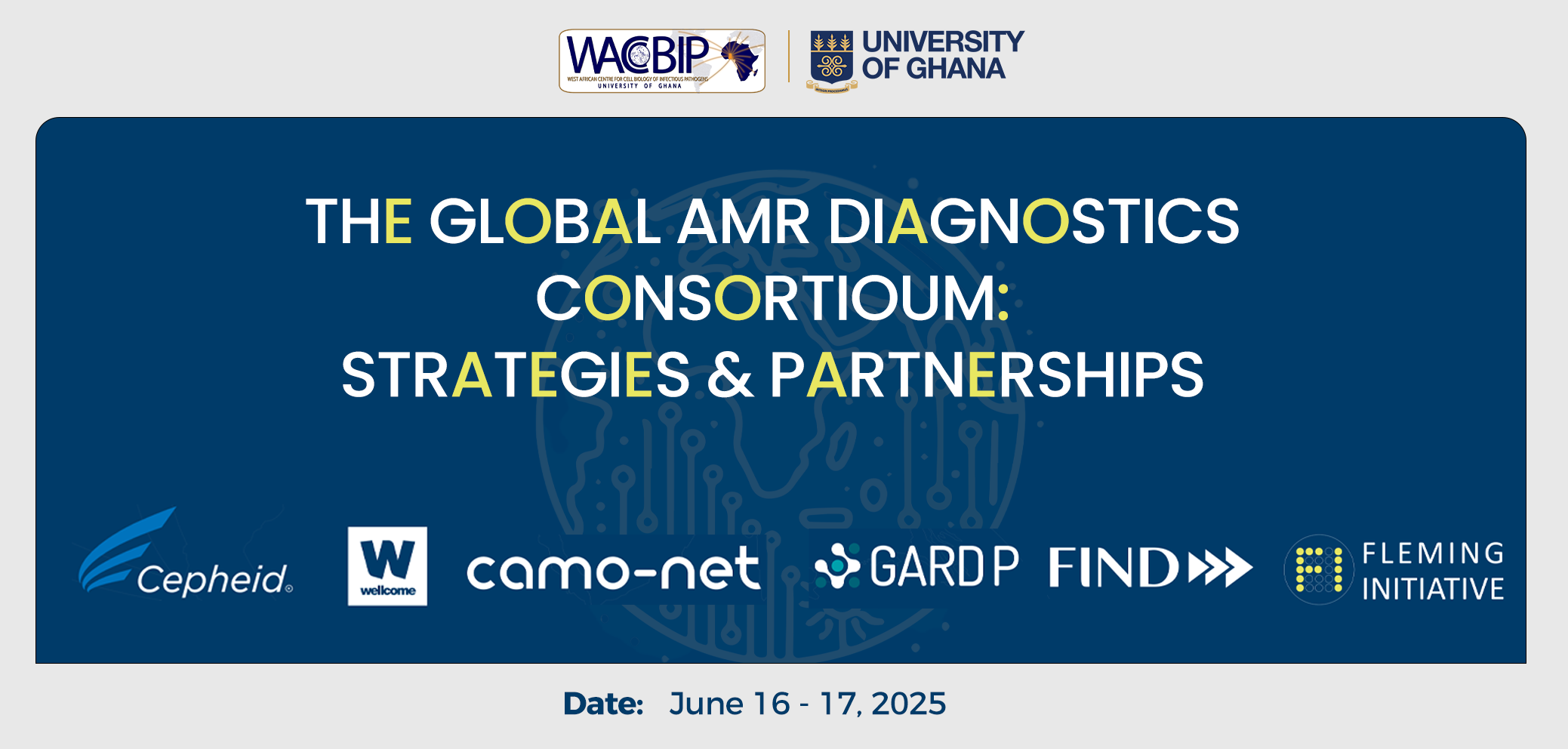Stakeholders chart new direction for collaboration, equity, and innovation in the fight against antimicrobial resistance
The West African Centre for Cell Biology of Infectious Pathogens (WACCBIP) played host to a landmark global event: the launch of the Global AMR Diagnostics Consortium.
Held on June 16 and 17, the two-day forum brought together a diverse and influential group of over 60 participants from across five continents to lay the foundation for a unified and coordinated approach to tackling one of the world’s most pressing health threats—antimicrobial resistance (AMR).
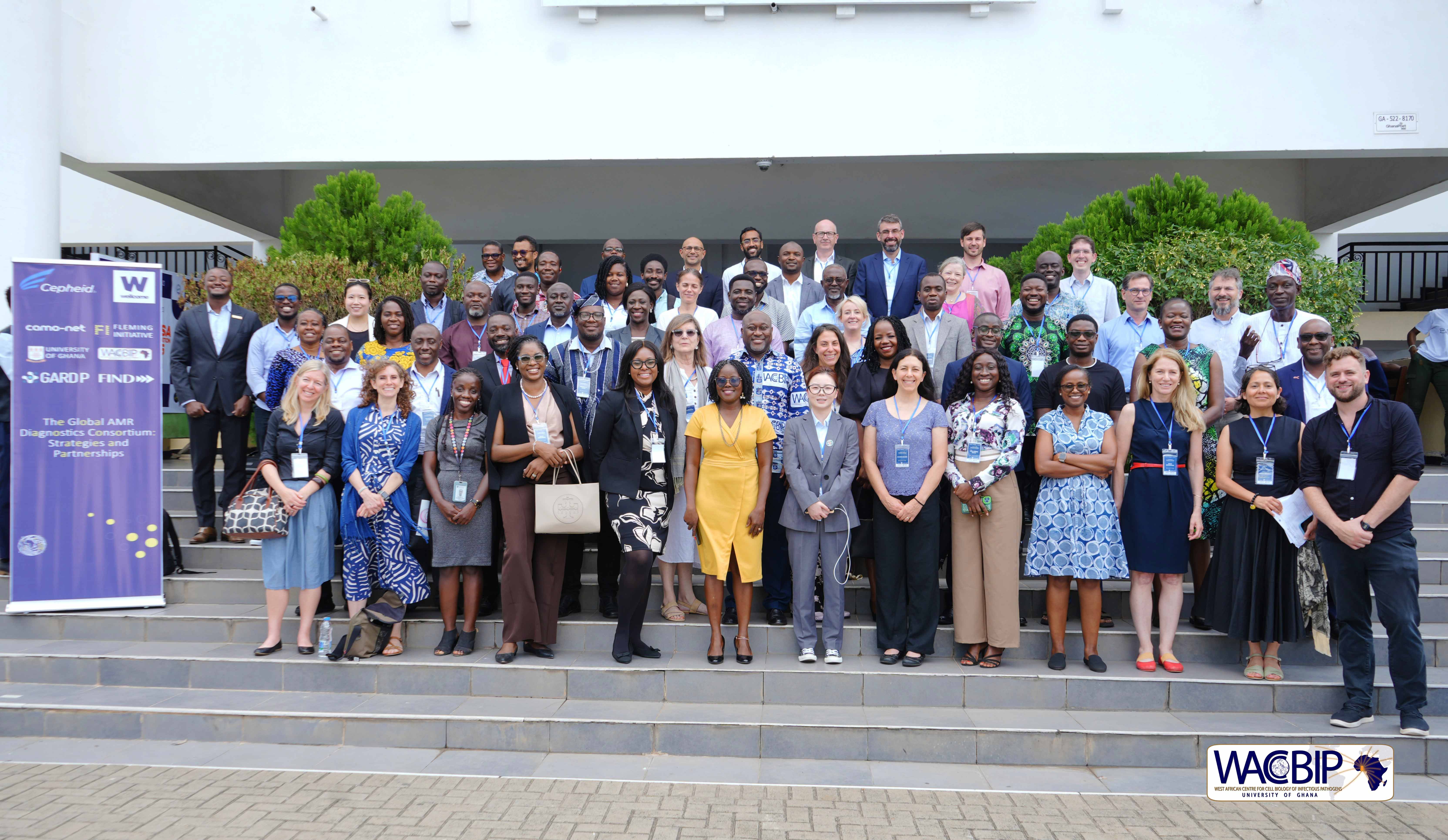
Organised in partnership with Wellcome and Cepheid, the launch convened key players from the Fleming Initiative, the Global Antibiotic Research and Development Partnership (GARDP), Camo-Net, FIND, and WACCBIP. The initiative seeks to galvanize international efforts to develop, deploy, and democratize AMR diagnostics, with a particular focus on ensuring equitable access for low- and middle-income countries (LMICs), thus regions disproportionately affected by drug-resistant infections and often left behind in the rollout of innovative health technologies.
A Call to Action at a Critical Time
In his opening remarks, Professor Gordon Awandare, Director of WACCBIP and Pro Vice-Chancellor for Academic and Student Affairs of the University of Ghana, welcomed participants and reiterated the Centre’s strategic commitment to driving high-impact research and fostering regional leadership in infectious disease control.
“We must ensure that Africa is not only part of the conversation on AMR diagnostics but also shaping it,”
he said, emphasizing the importance of building resilient research ecosystems that are capable of both innovating and responding rapidly to emerging threats.
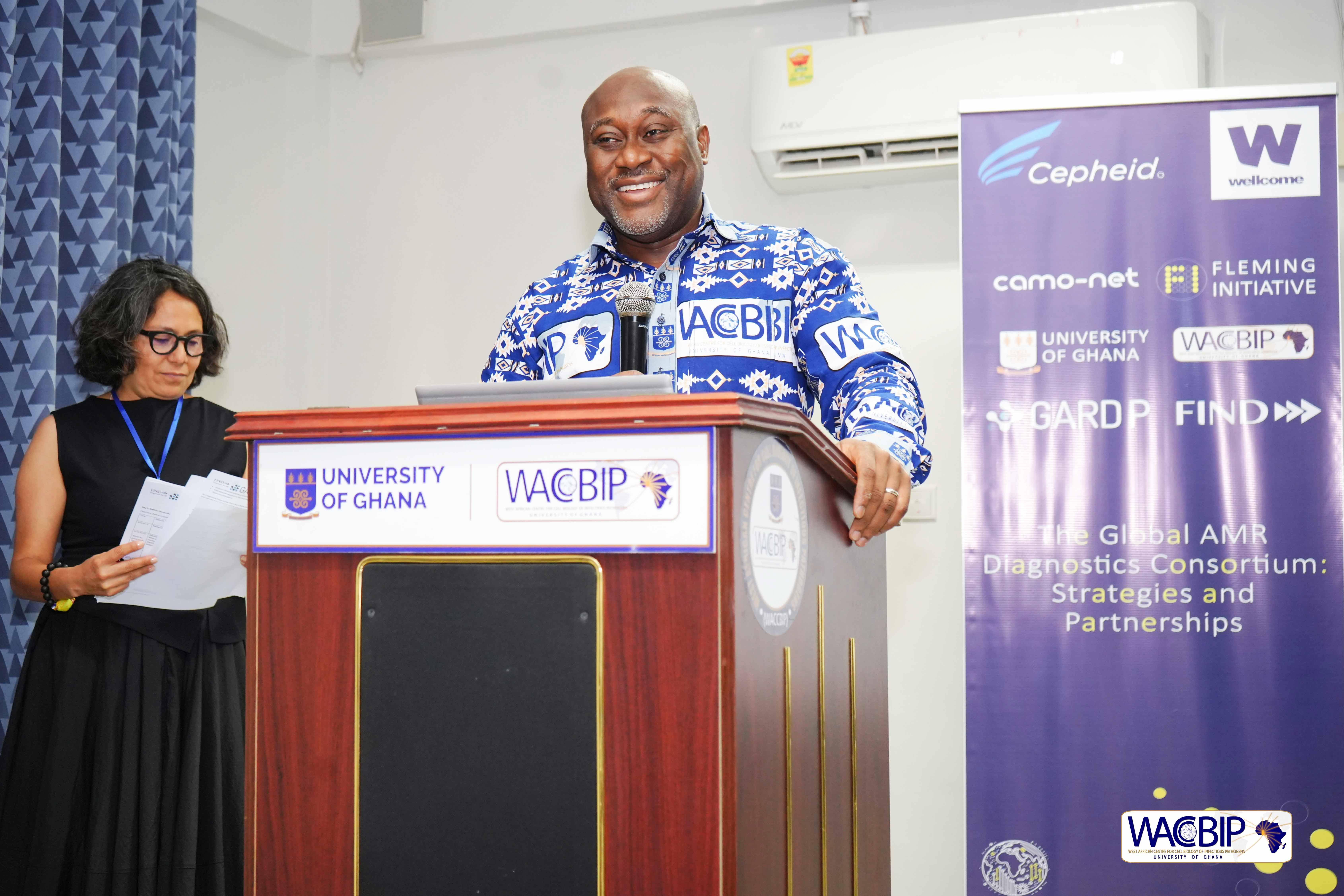
Professor Alison Holmes, Director of the Fleming Initiative at Imperial College London, followed with a keynote address that highlighted the magnitude of the global AMR crisis and the fragmented nature of diagnostic development and deployment. She called for urgent, strategic investment in diagnostics and for partnerships that transcend institutional and geographic boundaries.
“Without accurate, affordable, and timely diagnostics, our ability to manage AMR is severely compromised,”
she warned.
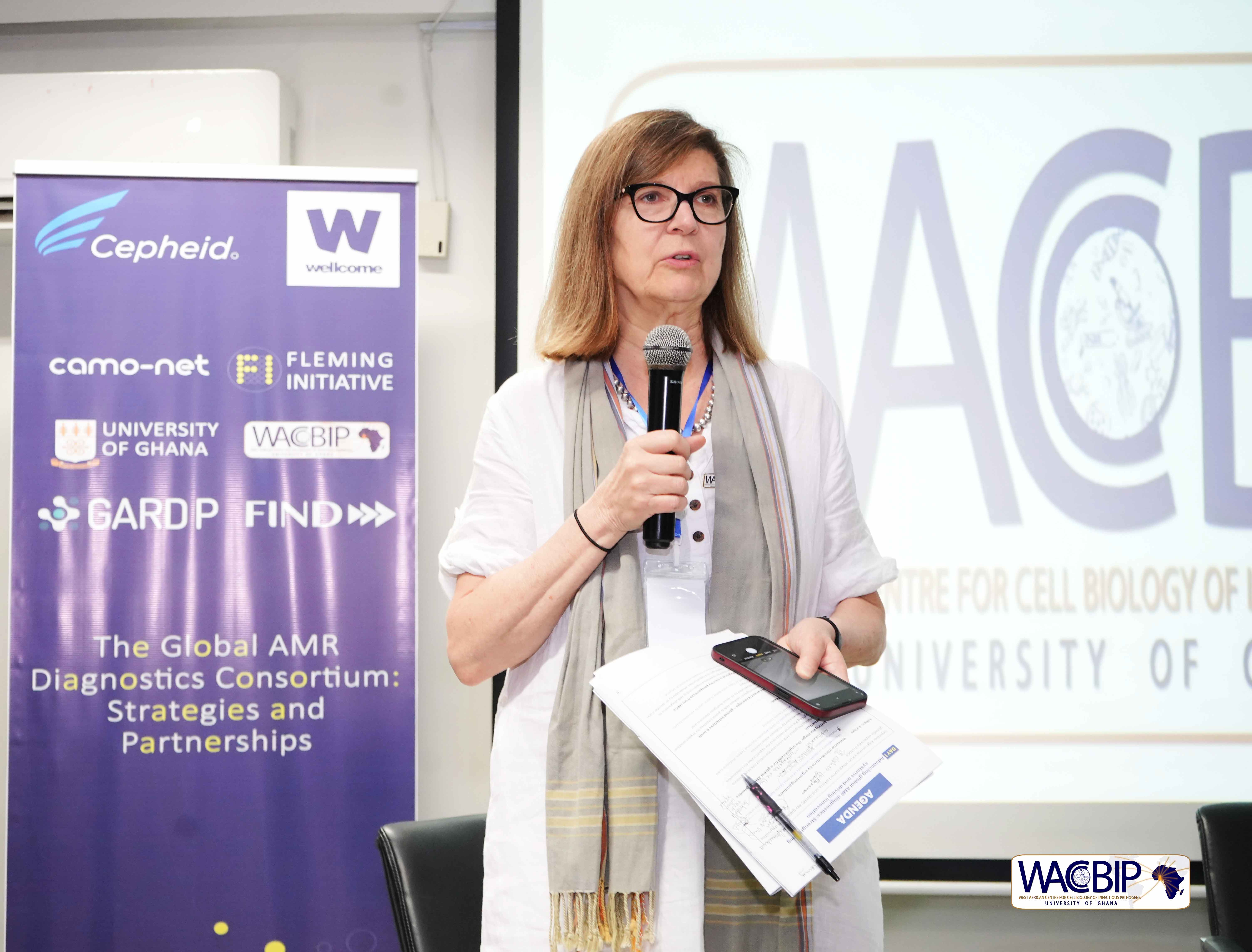
Framing the Issues, Building the Vision
The agenda for Day One featured a series of framing presentations from consortium partners, spotlighting the current gaps in diagnostics for AMR surveillance, treatment decision-making, and health system integration. Case studies illustrated challenges such as inconsistent quality assurance, limited diagnostic infrastructure in resource-constrained settings, and the need for locally adaptable technologies.
Participants then broke into working groups to grapple with some of the Consortium’s foundational questions: What are the immediate priorities? What principles should define its approach—equity, transparency, impact? What would success look like three years from now?
The consensus was clear: the Consortium must be agile, inclusive, and rooted in the lived realities of health systems, especially in underserved regions. It must also play a key role in aligning fragmented global efforts under a common agenda.
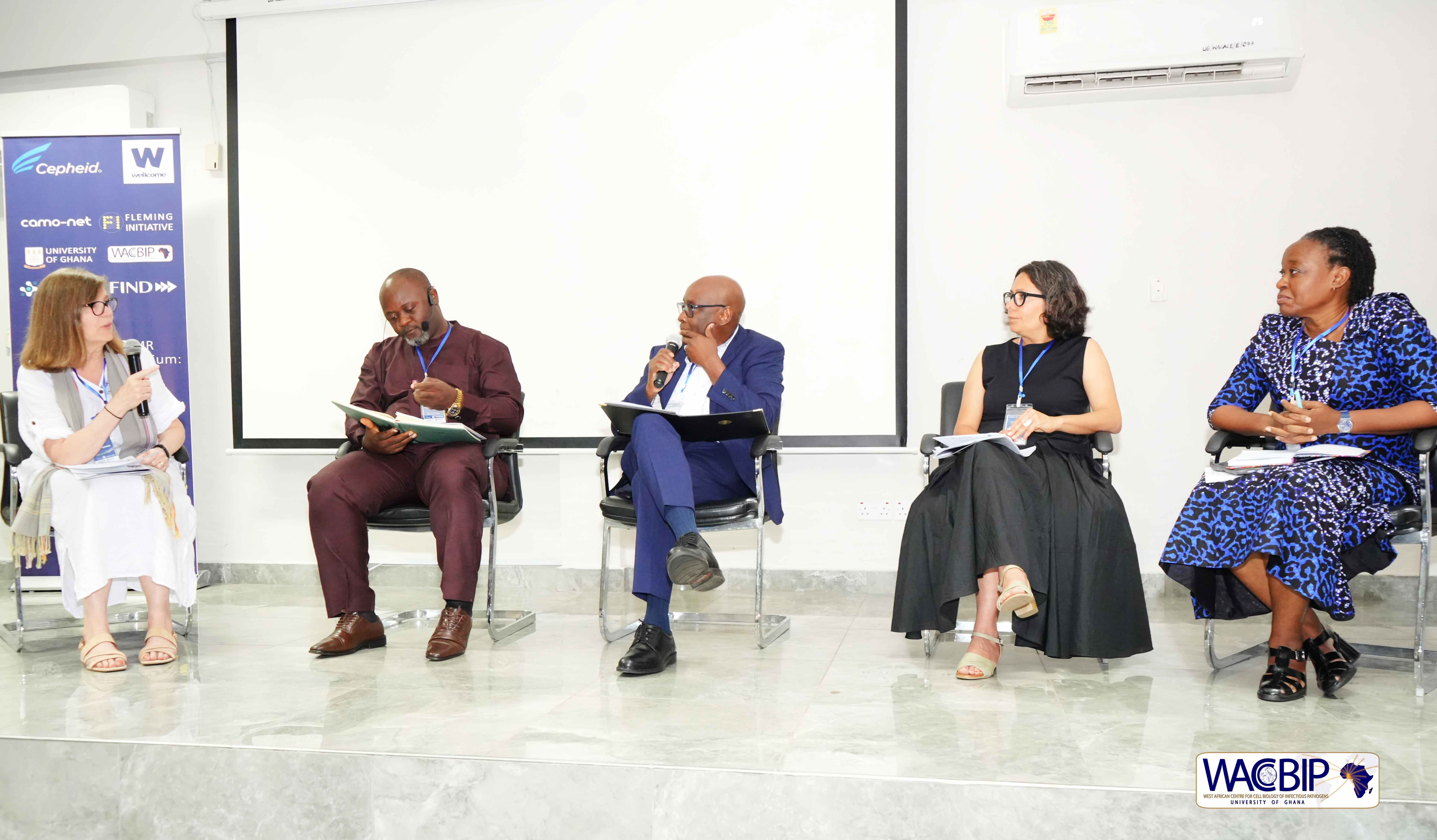
From Vision to Structure
On the second day, discussions shifted from ideas to implementation. The programme focused on the Consortium’s future structure and governance. Facilitated sessions explored possible models for membership and representation, delineated roles and responsibilities, and debated funding mechanisms and accountability frameworks.
Participants stressed the importance of ensuring that country-level stakeholders—not only international NGOs or funders—play a central role in shaping priorities and decision-making. Several contributors underscored the need to create mechanisms for engaging ministries of health, local research institutions, and community-level implementers.
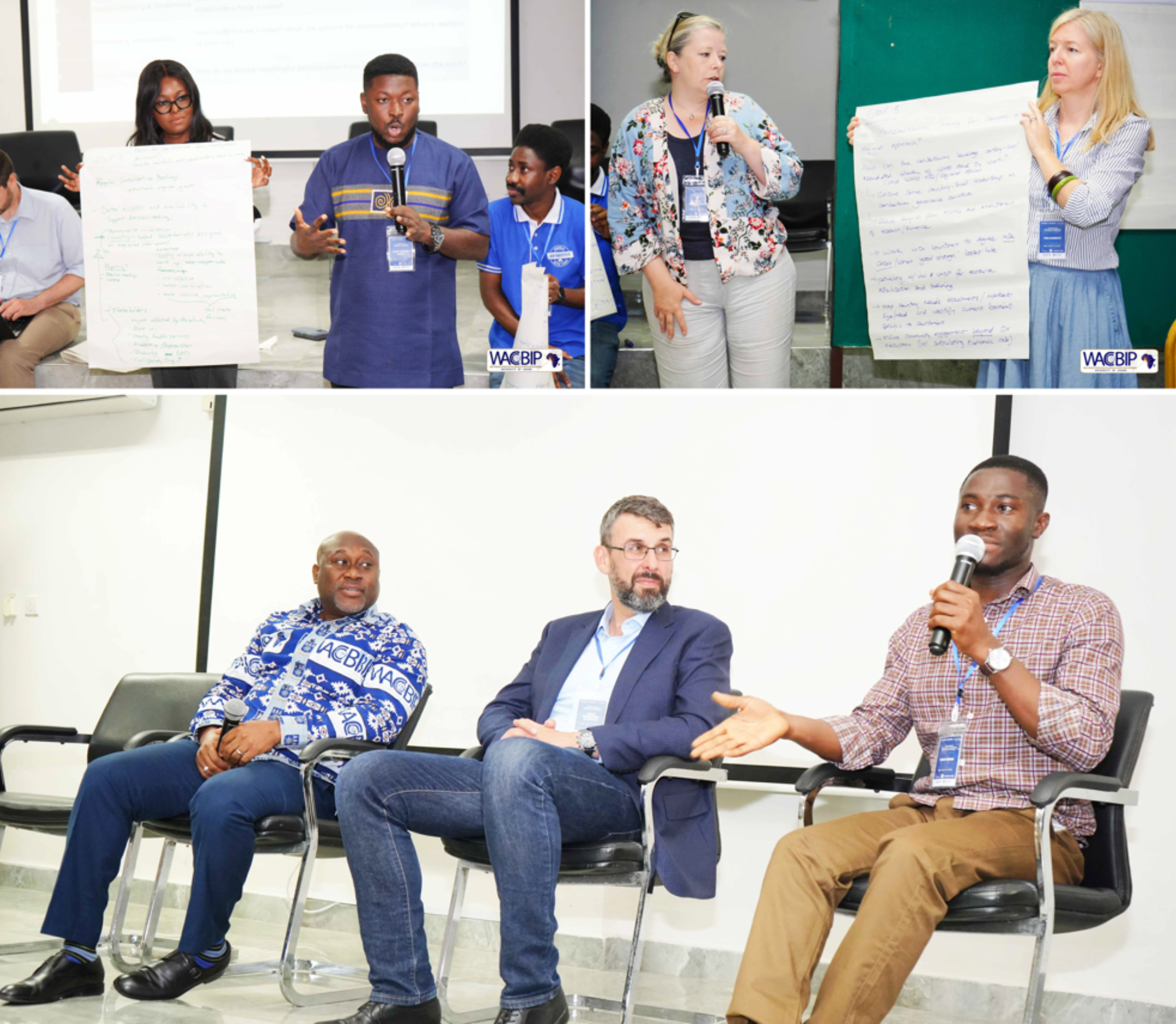
“We have the opportunity here to build a model for diagnostics collaboration that is not only technically strong, but also politically smart and locally owned,”
said one participant from the African Union’s Africa CDC.
Science in Action: A Tour of WACCBIP’s Research Infrastructure
An integral part of the convening was a guided tour of WACCBIP’s advanced research laboratories. Participants had the opportunity to engage with ongoing research in molecular biology, genomics, and diagnostic innovation, gaining firsthand insight into the Centre’s capabilities and contributions to the global research landscape.
For many guests, the tour was a powerful reminder that high-quality science is being conducted in Africa—not just as a site of implementation, but as a hub of leadership and innovation. The visit underscored the importance of investing in and amplifying regional scientific expertise to advance global health goals.
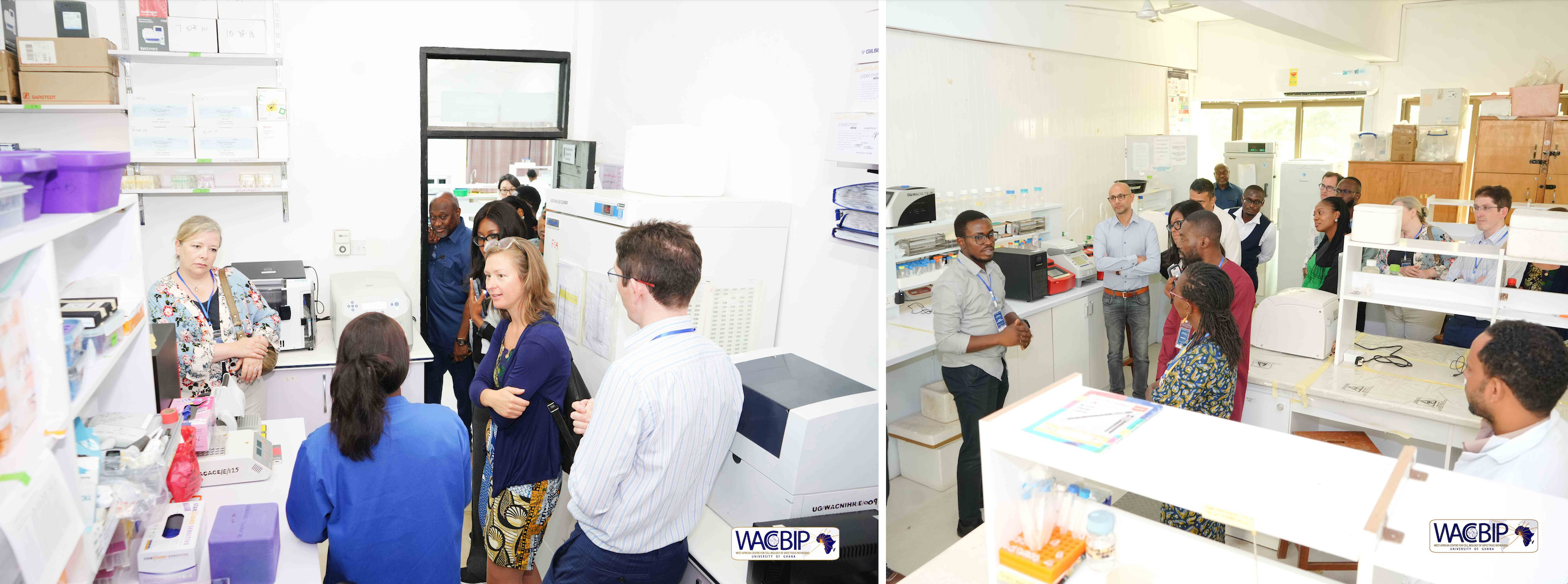
A Shared Commitment, A Path Forward
The meeting concluded with a renewed commitment among all stakeholders to co-develop and operationalize the Consortium’s next steps. These include finalizing the proposed governance structure, deepening consensus among partners, mapping existing diagnostic initiatives, and launching a country engagement strategy to ensure that national needs and voices are central to the Consortium’s work.
In closing, Professor Awandare remarked,
“This launch is only the beginning. The work ahead is complex, but it is essential. We look forward to working together—across disciplines, borders, and sectors—to ensure that AMR diagnostics are accessible, impactful, and built for the realities of every country.”
As the world confronts the escalating threat of antimicrobial resistance, the Global AMR Diagnostics Consortium represents a bold step toward collective action grounded in science, solidarity, and shared purpose. WACCBIP, with its track record of excellence and its deep roots in regional health systems, stands ready to help lead the charge.

